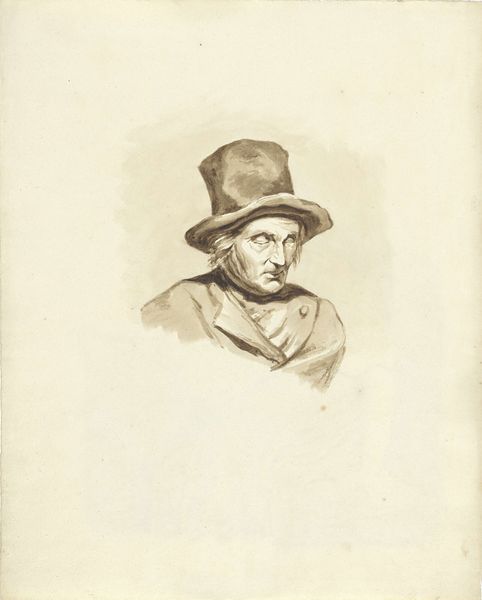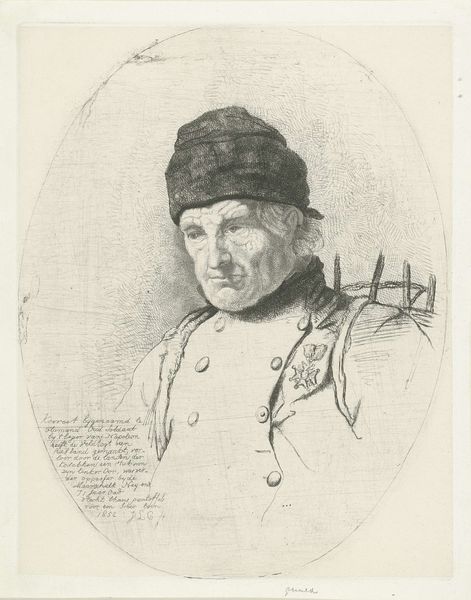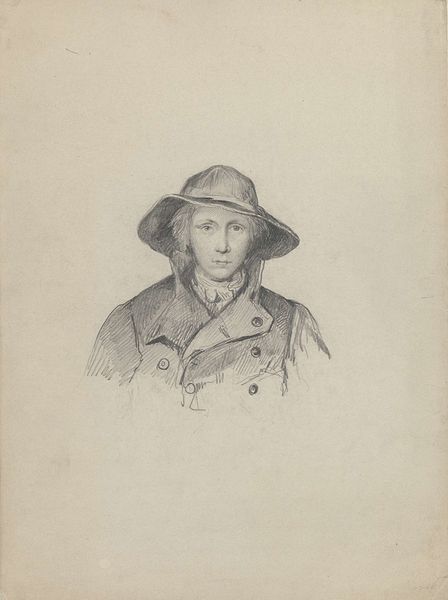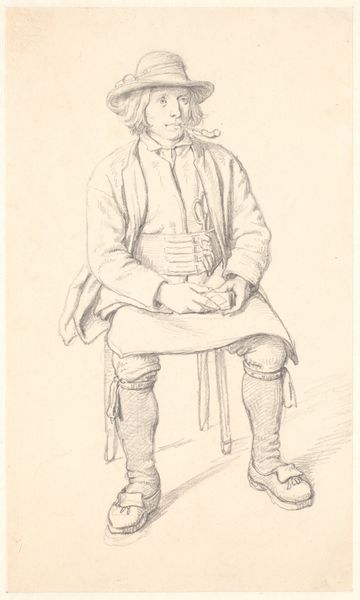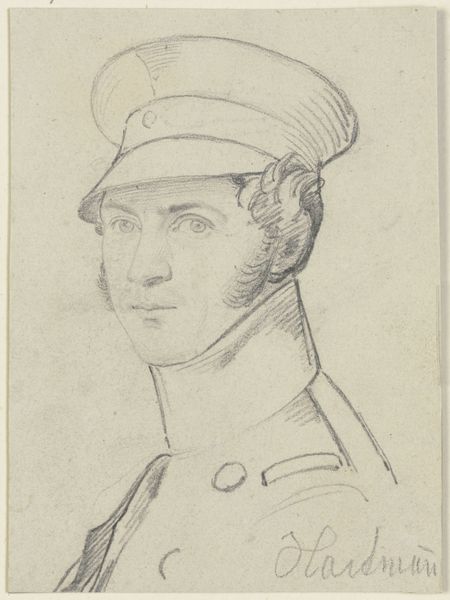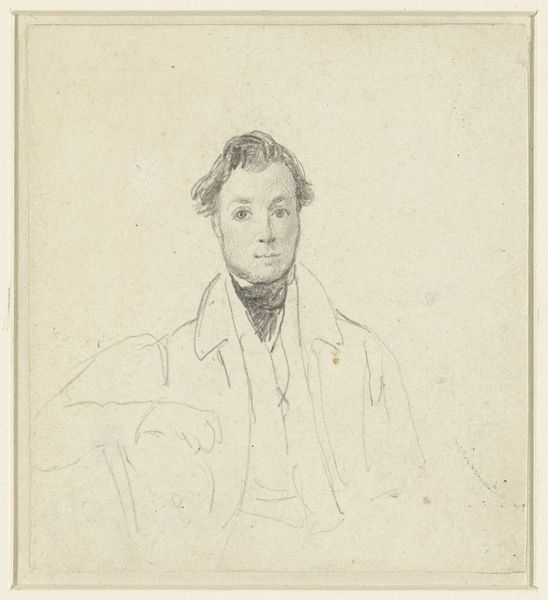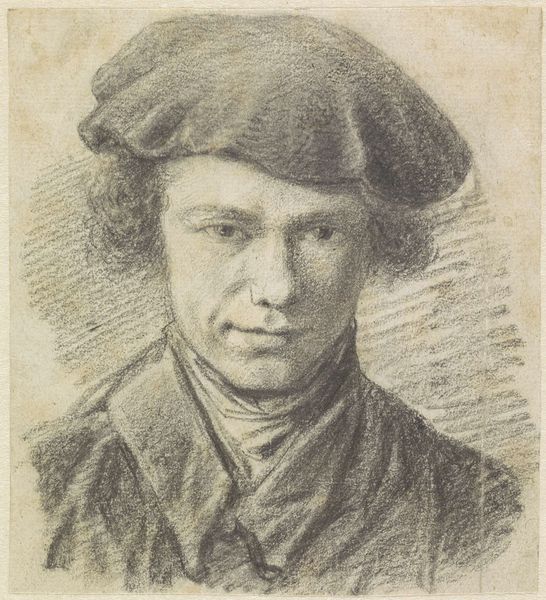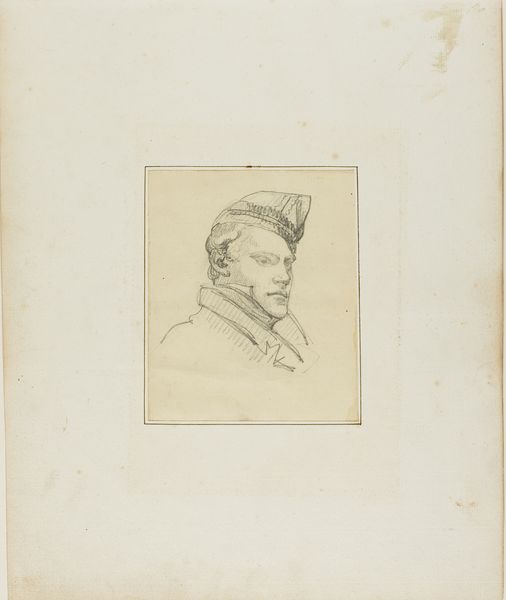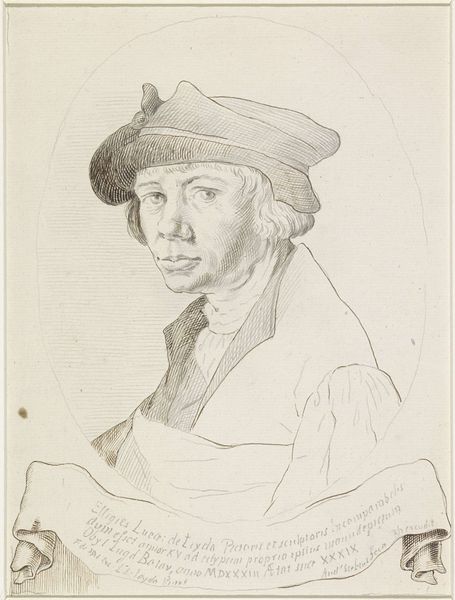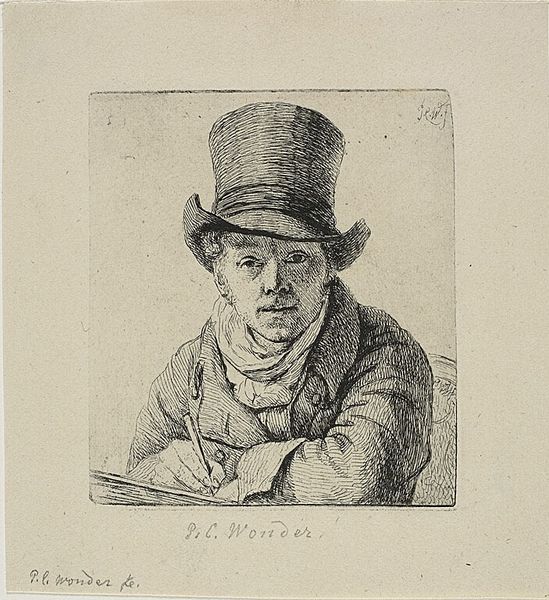
drawing, pencil
#
portrait
#
pencil drawn
#
drawing
#
self-portrait
#
pencil sketch
#
figuration
#
pencil drawing
#
romanticism
#
pencil
#
portrait drawing
#
realism
Dimensions: height 163 mm, width 145 mm
Copyright: Rijks Museum: Open Domain
Curator: Let's take a moment to examine "Zelfportret" by Barend Cornelis Koekkoek. The Rijksmuseum tells us this self-portrait, dating roughly from 1813 to 1862, is rendered in pencil. Editor: There's a compelling rawness here. The quick pencil strokes seem very immediate. It feels less like a finished piece and more like a study of the artist’s own face. Curator: Absolutely, and that immediacy highlights the artist's hand – the material reality of the art-making process. Koekkoek, celebrated for his landscapes, seemingly used readily available, inexpensive materials. Pencil, paper, the artist himself - all at hand, collapsing the distance between artist and subject, labor and image. Editor: Indeed, the image speaks to a self-awareness developing amongst artists. It’s interesting to consider this piece within the broader social and institutional context of the time. Self-portraits are statements. They declare an individual's place in the world. Curator: And the hat? Such a casual but significant detail. We get a sense of the individual, not simply a generalized, idealized portrait. The lines around the eye are telling in their use. It’s not about smoothing over reality, but embracing the physicality of the subject. Editor: Right, think about how the accessibility of pencil and paper impacted the kind of art that was being produced and disseminated! It democratizes art, bringing the potential for representation and self-fashioning to a broader populace beyond the patronage networks. It's powerful. Curator: Exactly. He explores the interplay between artist, materials, and the final representation. This connects it with the consumption habits of the era, questioning the nature and cost of image creation. Editor: It makes you wonder about the networks that sustained Koekkoek's career – his patrons, dealers, and fellow artists who saw and reacted to these works. Even a 'simple' self-portrait carries the weight of a complex social matrix. Curator: This quick study becomes surprisingly rich in terms of materiality and context. Editor: Yes, something as humble as a pencil drawing can offer a surprisingly sophisticated portrait of an era.
Comments
No comments
Be the first to comment and join the conversation on the ultimate creative platform.

